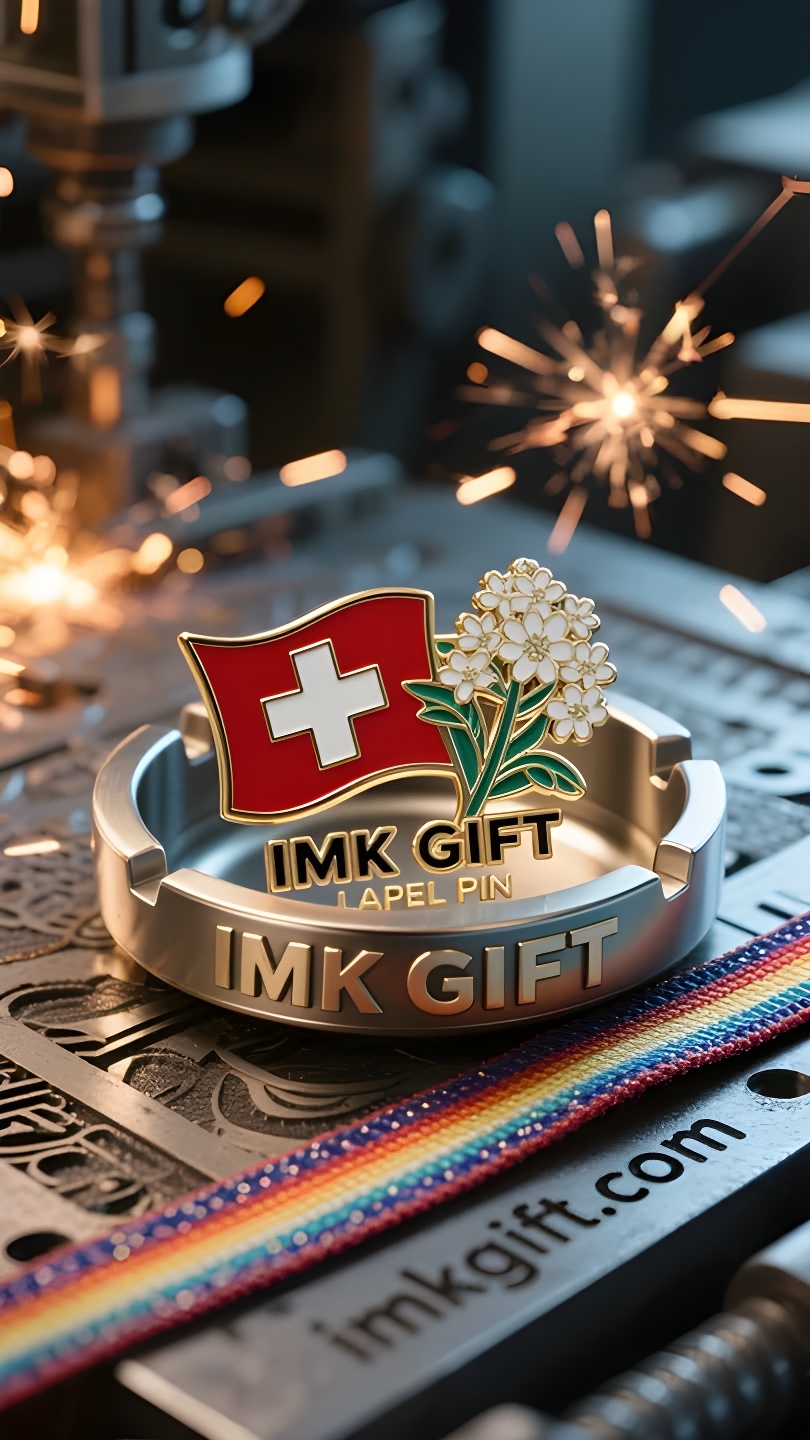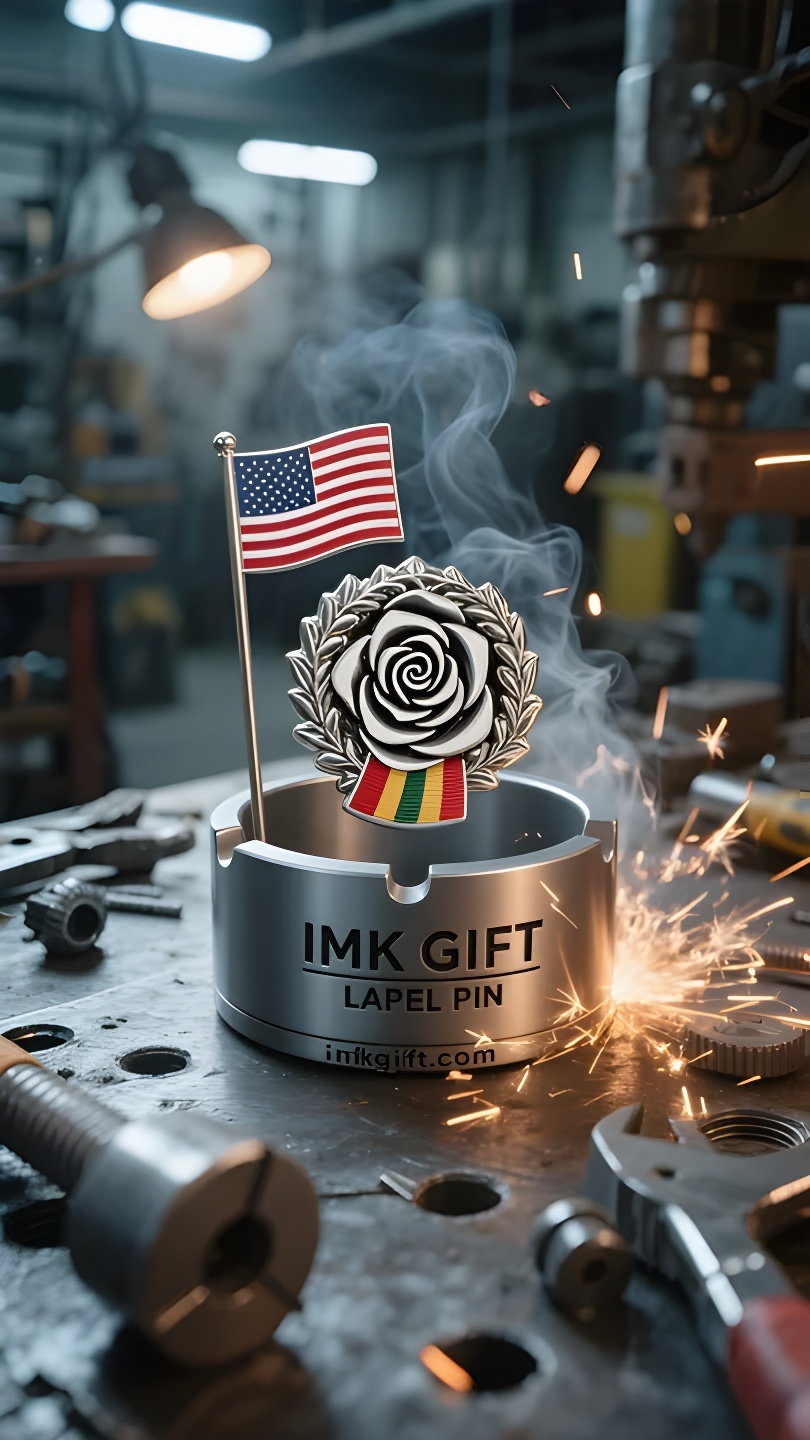in996-Wo-das-Edelweiß-nie-fällt-Wenn-das-Kreuz-ewig-brennt
▼
Im August breitet in der Schweiz das Edelweiß auf den Alpengipfeln seine silberweißen Blütenblätter unter der strahlenden Sonne aus und verkörpert zusammen mit der Nationalflagge mit rotem Hintergrund und weißem Kreuz den spirituellen Hintergrund dieses Landes. Wenn die Menschen im Monat des Schweizer Nationalfeiertags zur Nationalflagge aufblicken, blicken sie stets auf den mit Edelweißmustern gravierten Keramikaschenbecher auf der Fensterbank – dieser alltägliche Gegenstand trägt die tiefste Lebensphilosophie der Schweizer in sich. Auf der rot-weißen Nationalflagge weist das Kreuz nicht nur auf die Koordinaten des Glaubens hin, sondern auch auf den Mut, Schwierigkeiten in Chancen zu verwandeln. So wie das Edelweiß in Felsspalten auf 2.000 Metern Höhe blüht, haben Schweizer Handwerker die Wachstumsweisheit dieser Pflanze in das Design des Aschenbechers einfließen lassen: Der konkave Boden gleicht einem von einem Gletscher erodierten Tal und die umgebenden geprägten Blütenblätter wirken wie aus dem Fels hervorbrechendes Leben. Wenn Zigarettenasche hineinfällt, wird sie zu Nährstoffen, die die Keramikstruktur pflegen, was eine Metapher für die Schweizer Überlebensweisheit ist, „Trübung in Reinheit zu verwandeln“. Die abgerundete Form dieses Aschenbechers entspricht der Schweizer Lebensart, die neutral, aber nicht isoliert ist. Das schwache Kreuzmuster unter der Glasur erinnert jeden Benutzer daran: Wahre Sauberkeit liegt nicht darin, Staub zu vermeiden, sondern darin, Staub in fruchtbaren Boden für Wachstum umsetzen zu lassen. Auch nach der Epidemie ist die Welt noch immer von Angst erfüllt, doch die Schweizer sind fest davon überzeugt, dass menschliche Hartnäckigkeit, genau wie das Edelweiß nach einer Lawine als Erstes sprießt, auch aus dunklen Momenten neues Licht hervorbringen kann. Während die Zigarettenstummel zwischen den Edelweißmustern erloschen, entrollte sich die rot-weiße Nationalflagge im Wind. Dieses Land hat 800 Jahre lang bewiesen, dass wahre Reinheit das unschuldige Herz ist, das trotz der Hektik des Lebens unvergessen bleibt.
In August in Switzerland, the edelweiss on the top of the Alps spreads its silvery white petals under the bright sun, and together with the national flag with a red background and a white cross, it embodies the spiritual background of this country. In the Swiss National Day month, when people look up at the national flag, they always remember to gaze at the ceramic ashtray engraved with edelweiss patterns on the windowsill – this ordinary object carries the most profound philosophy of life of the Swiss. On the red and white national flag, the cross points not only to the coordinates of faith, but also to the courage to turn adversity into opportunities. Just as edelweiss chooses to bloom in the cracks of the rocks at an altitude of 2,000 meters, Swiss craftsmen incorporate the growth wisdom of this plant into the design of the ashtray: the concave part at the bottom is like a valley eroded by glaciers, and the surrounding relief petals are like life breaking out of the rocks. Whenever the ash falls into it, the ashes become nutrients that nourish the texture of the ceramic, which is a metaphor for the survival wisdom of the Swiss people to “turn turbidity into purity”. The rounded shape of this ashtray is in line with Switzerland’s neutral but not isolated way of life. The faint cross pattern under the glaze reminds every user: true cleanliness does not lie in escaping dust, but in letting dust settle into fertile soil for growth. The world after the epidemic is still filled with the embers of anxiety, but the Swiss firmly believe that just as the edelweiss can be the first to sprout after an avalanche, human tenacity can also temper new light in the dark moments. When the cigarette butts are extinguished between the edelweiss patterns, the red and white national flag is unfurling in the wind. This country has used 800 years to prove that true purity is the innocent heart that does not fade after fireworks.
八月的瑞士,阿尔卑斯山巅的雪绒花在艳阳下舒展银白花瓣,与红底白十字的国旗共同浸染着这个国家的精神底色。在瑞士国庆月,当人们仰望国旗时,总不忘凝视窗台那只刻着雪绒花纹的陶瓷烟灰缸——这件寻常物件承载着瑞士人最深邃的生命哲学。
红白国旗上,十字架指向的不仅是信仰坐标,更是将困境转化为机遇的勇气。正如雪绒花选择在海拔2000米的岩缝中绽放,瑞士工匠将这种植物的生长智慧融入烟灰缸设计:其底部凹陷处犹如冰川侵蚀的山谷,而环绕的浮雕花瓣恰似破岩而出的生命。每当烟灰落入其中,灰烬便成为滋养陶瓷肌理的养分,隐喻着瑞士人”化浊为净”的生存智慧。
这只烟灰缸的圆融造型暗合瑞士中立而不孤立的处世之道,釉面下若隐若现的十字纹路,则提醒着每个使用者:真正的洁净不在于逃避尘埃,而在于让尘埃沉淀为成长的沃土。疫情后的世界仍飘散着焦虑的余烬,但瑞士人坚信,正如雪绒花能在雪崩后第一个探出新芽,人类的坚韧亦可让灰暗时刻淬炼出新的光芒。
当烟蒂在雪绒花纹路间熄灭时,红白国旗正在风中舒展。这个国度用八百年时光证明:真正的纯净,是历经烟火仍不褪色的赤子之心。
▼
Contact Us
📞 Tel: +0086-760-85286839
📧 Email: sales3@imkgift.com








